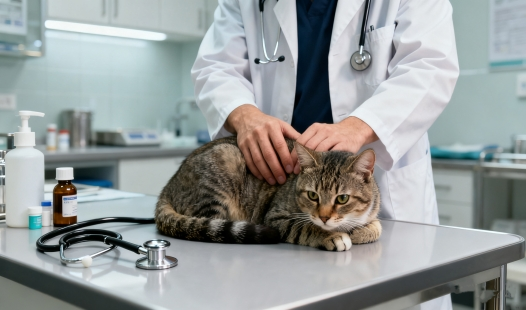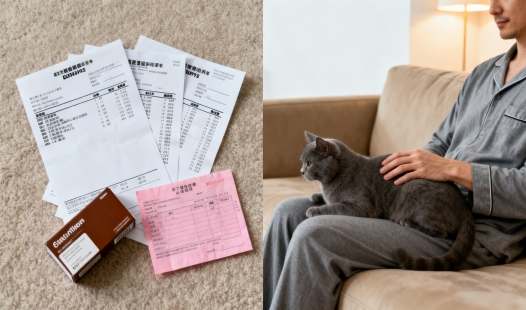Can GS 441524 cause liver or kidney issues in cats?
Monitoring liver enzymes during GS-441524 treatment
Veterinarians have shown considerable interest in GS 441524 due to its potential as an antiviral treatment for feline infectious peritonitis (FIP), a disease that has historically been difficult to manage. Despite its promise, some concerns remain regarding possible adverse effects on critical organs such as the kidneys and liver. Pet owners and veterinary professionals are closely monitoring these potential risks while using the therapy to ensure that it is both safe and effective. This article provides a thorough overview of current research, offering insights into the appropriate administration of GS-441524, including recommended dosages, treatment duration, and the importance of regular veterinary check-ups. Emphasis is placed on careful monitoring of liver enzymes and kidney function markers throughout the treatment course to detect any early signs of organ stress. By understanding these considerations, veterinarians and cat owners can maximize the therapeutic benefits of GS-441524 while minimizing potential complications, ensuring the best possible outcomes for feline patients.



Monitoring liver enzymes during GS-441524 treatment
Liver health is crucial when administering any medication, including GS-441524. Regular monitoring of liver enzymes provides valuable insights into how a cat's body is processing the drug and whether any adverse effects are occurring.

Key liver enzymes to monitor
- Alanine aminotransferase (ALT)
- Aspartate aminotransferase (AST)
- Alkaline phosphatase (ALP)
- Gamma-glutamyl transferase (GGT)
These enzymes can indicate liver stress or damage when elevated. While GS-441524 has not been consistently linked to severe liver issues, vigilant monitoring remains essential for early detection of any potential problems.
Frequency of liver enzyme tests
Veterinarians typically recommend baseline liver enzyme tests before initiating GS 441524 treatment. Follow-up tests are often conducted at regular intervals:
- Every 2-4 weeks during the initial treatment phase
- Monthly during extended treatment periods
- As needed based on clinical signs or previous test results
This proactive approach allows for timely adjustments to the treatment plan if any concerning trends in liver enzyme levels are observed.

Renal function assessment protocols
Kidneys play a vital role in drug metabolism and excretion. Assessing renal function throughout GS-441524 treatment is crucial to ensure the cat's body can effectively process and eliminate the medication.
Key renal function markers
- Blood urea nitrogen (BUN)
- Creatinine
- Symmetric dimethylarginine (SDMA)
- Urine specific gravity
These markers provide a comprehensive picture of kidney health and function. Elevated levels may indicate renal stress or impairment.
Urine analysis importance
In addition to blood tests, urine analysis offers valuable insights into kidney function. Parameters such as protein content, sediment examination, and bacterial culture can reveal early signs of kidney stress or infection.
Hydration status monitoring
Maintaining proper hydration is crucial during GS 441524 treatment. Dehydration can exacerbate potential kidney stress. Veterinarians may recommend:
- Regular weight checks
- Skin turgor assessments
- Encouraging water intake or providing subcutaneous fluids if necessary
Preventing organ toxicity during antiviral therapy
While GS-441524 has shown promising results in treating FIP, implementing strategies to minimize potential organ toxicity is crucial for ensuring the best possible outcomes for feline patients.
Dosage Optimization
Proper dosing of GS-441524 is essential for balancing efficacy and safety. Factors to consider include:
- Cat's weight and overall health status
- Severity of FIP symptoms
- Presence of any pre-existing liver or kidney conditions
Veterinarians may adjust dosages based on individual patient response and ongoing monitoring results.
Supportive Care Measures
Implementing supportive care strategies can help protect vital organs during GS-441524 treatment:
- Ensuring adequate hydration through oral or parenteral fluids
- Providing a balanced, easily digestible diet
- Administering antioxidants or hepatoprotective supplements as recommended by the veterinarian
- Managing any concurrent medications to minimize drug interactions
Patient Selection And Risk Assessment
Careful patient selection is crucial when considering GS-441524 treatment. Cats with pre-existing liver or kidney disease may require additional monitoring or alternative treatment approaches. A thorough risk assessment should be conducted, weighing the potential benefits of GS-441524 against the risks for each individual patient.
Conclusion
While concerns about potential liver and kidney issues associated with GS-441524 treatment in cats are valid, current evidence suggests that severe organ toxicity is not a common occurrence when the medication is used appropriately and under veterinary supervision. Additionally, understanding the GS-441524 cost can help pet owners plan for the financial aspect of treatment. However, vigilant monitoring of liver enzymes and renal function markers remains essential throughout the treatment course.
By implementing comprehensive monitoring protocols, optimizing dosages, and providing supportive care, veterinarians and pet owners can work together to maximize the benefits of GS-441524 while minimizing potential risks to feline patients. As research in this area continues to evolve, staying informed about the latest findings and best practices is crucial for ensuring the safest and most effective use of this promising antiviral therapy.
FAQ
1. How long does it typically take for GS-441524 to show effects in treating FIP?
Most cats begin showing improvement within 1-2 weeks of starting GS-441524 treatment. However, the full course of therapy often lasts 12 weeks or longer, depending on the individual case and response to treatment.
2. Are there any known drug interactions with GS-441524 that could affect liver or kidney function?
While specific drug interactions with GS-441524 are still being studied, it's important to inform your veterinarian about all medications and supplements your cat is taking. Some drugs metabolized by the liver or excreted by the kidneys may require dose adjustments or closer monitoring when used concurrently with GS-441524.
3. Can GS-441524 be used in cats with pre-existing liver or kidney conditions?
The use of GS-441524 in cats with pre-existing liver or kidney conditions requires careful consideration and close monitoring. In some cases, it may still be possible to use the medication with adjusted dosages and more frequent check-ups. However, the decision should be made on a case-by-case basis in consultation with a veterinarian experienced in FIP treatment.
Partner with BLOOM TECH for Premium GS-441524 Supply
For veterinary applications, BLOOM TECH provides superior GS-441524, as one of the leading suppliers of high-quality pharmaceutical ingredients. You may be certain that the product you get will be of the highest quality and consistency, and you will also have clear information regarding the GS-441524 cost, thanks to our dedication to regulatory compliance and our rigorous quality control procedures. Being a GS-441524 supplier with BLOOM TECH gives you access to:
- Pharmaceutical-grade GS-441524 with guaranteed purity
- Comprehensive documentation and certificates of analysis
- Expert technical support and formulation guidance
- Flexible ordering options to meet your specific needs
Take the next step in advancing your veterinary treatments. Contact Sales@bloomtechz.com today to discuss your GS-441524 requirements and experience the BLOOM TECH difference.
References
1. Pedersen, N.C., et al. (2019). Efficacy and safety of the nucleoside analog GS-441524 for treatment of cats with naturally occurring feline infectious peritonitis. Journal of Feline Medicine and Surgery, 21(4), 271-281.
2. Murphy, B.G., et al. (2020). Treatment of cats with feline infectious peritonitis with the nucleoside analog GS-441524. Animals, 10(5), 802.
3. Kim, Y., et al. (2020). Pharmacokinetics and safety of GS-441524 in healthy cats: A potential therapeutic for feline infectious peritonitis. Journal of Veterinary Pharmacology and Therapeutics, 43(6), 612-619.
4. Dickinson, P.J., et al. (2020). Antiviral treatment using the adenosine nucleoside analogue GS-441524 in cats with clinically diagnosed neurological feline infectious peritonitis. Journal of Veterinary Internal Medicine, 34(4), 1587-1593.

Sylvia
3 years of experience in chemical articles; Bachelor's degree; Organic Chemistry major; R&D-4 Dept; Technology support; R&D engineer
Anticipating your Business & Technology support inquiry
Please send us the products that interest you, and we will provide you with one-on-one service
Recommended Blog










_副本_1758248142309.webp)

